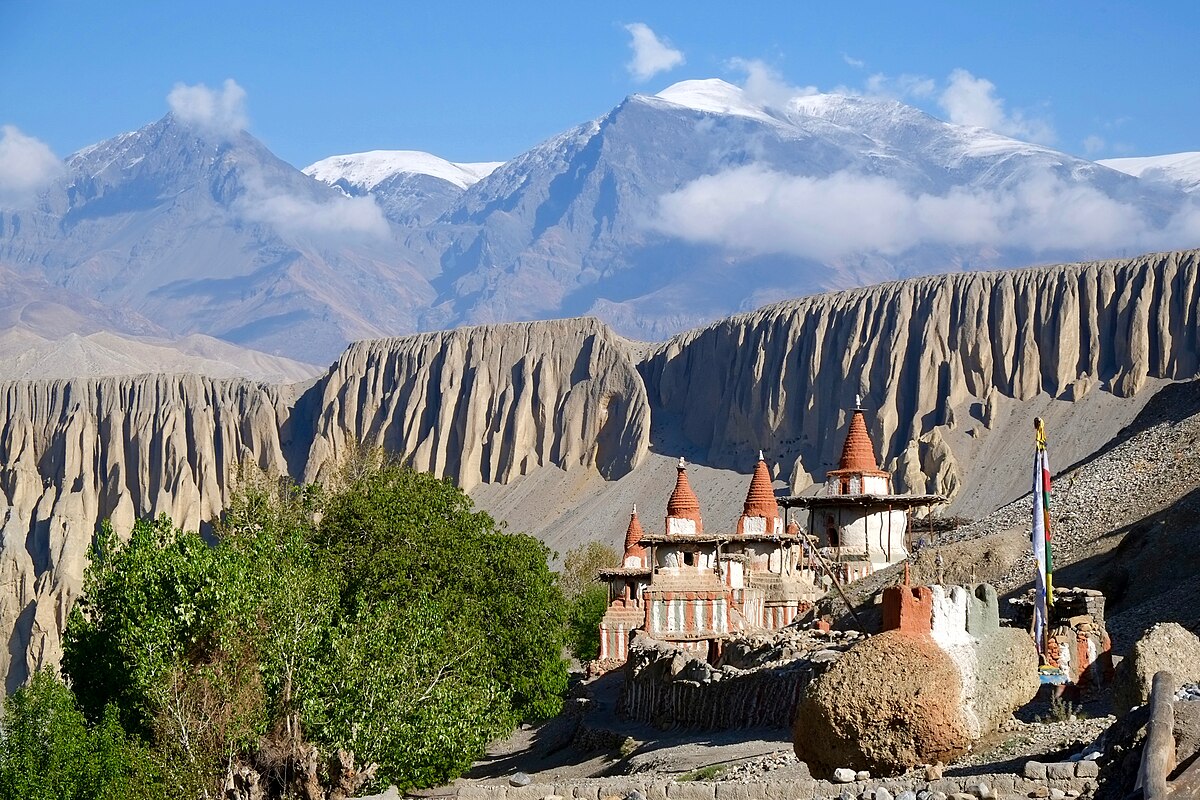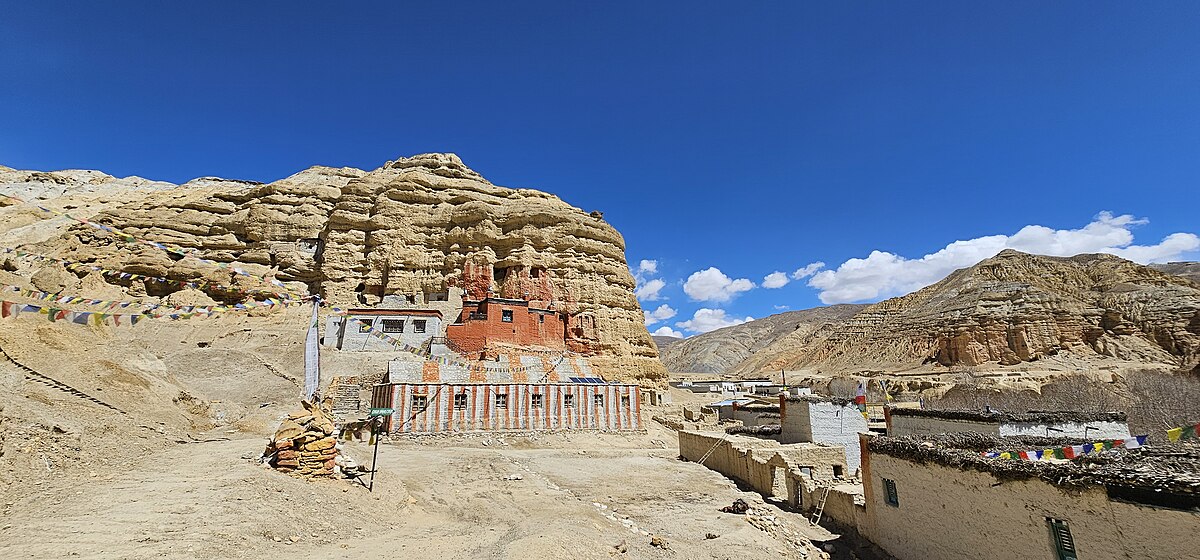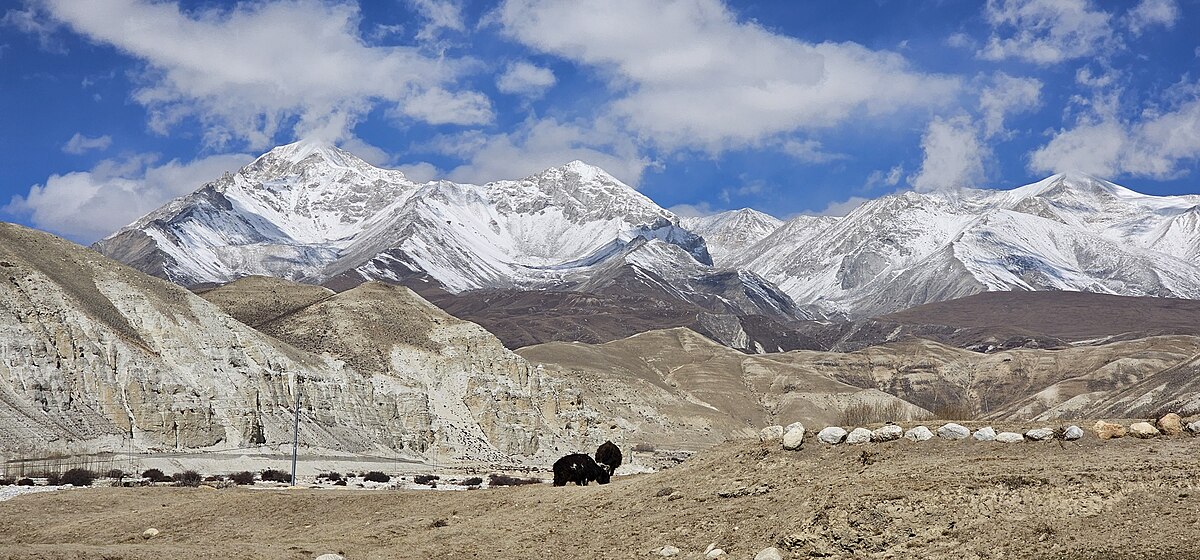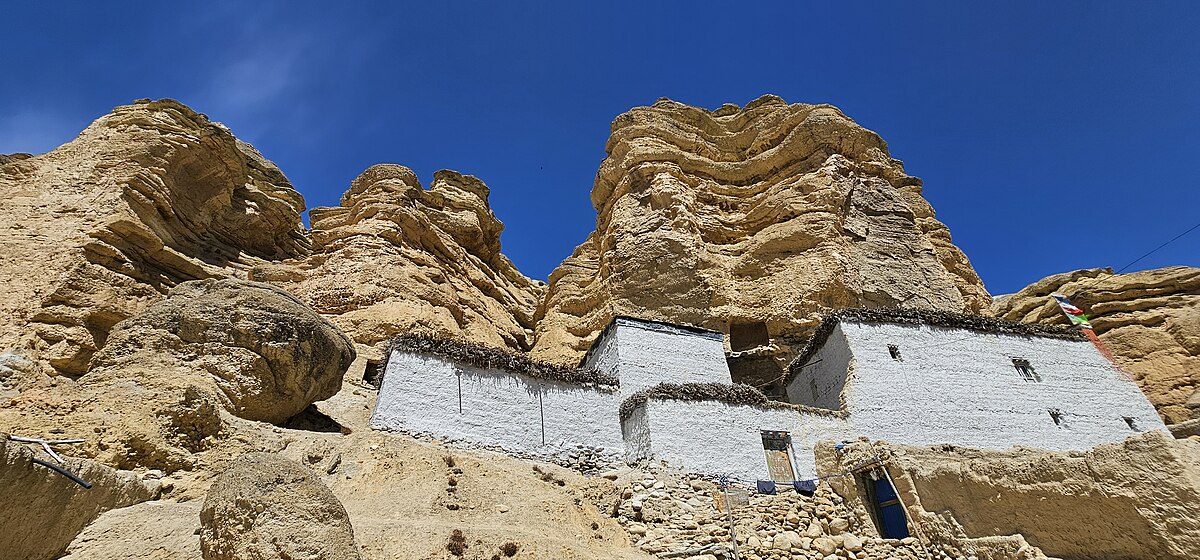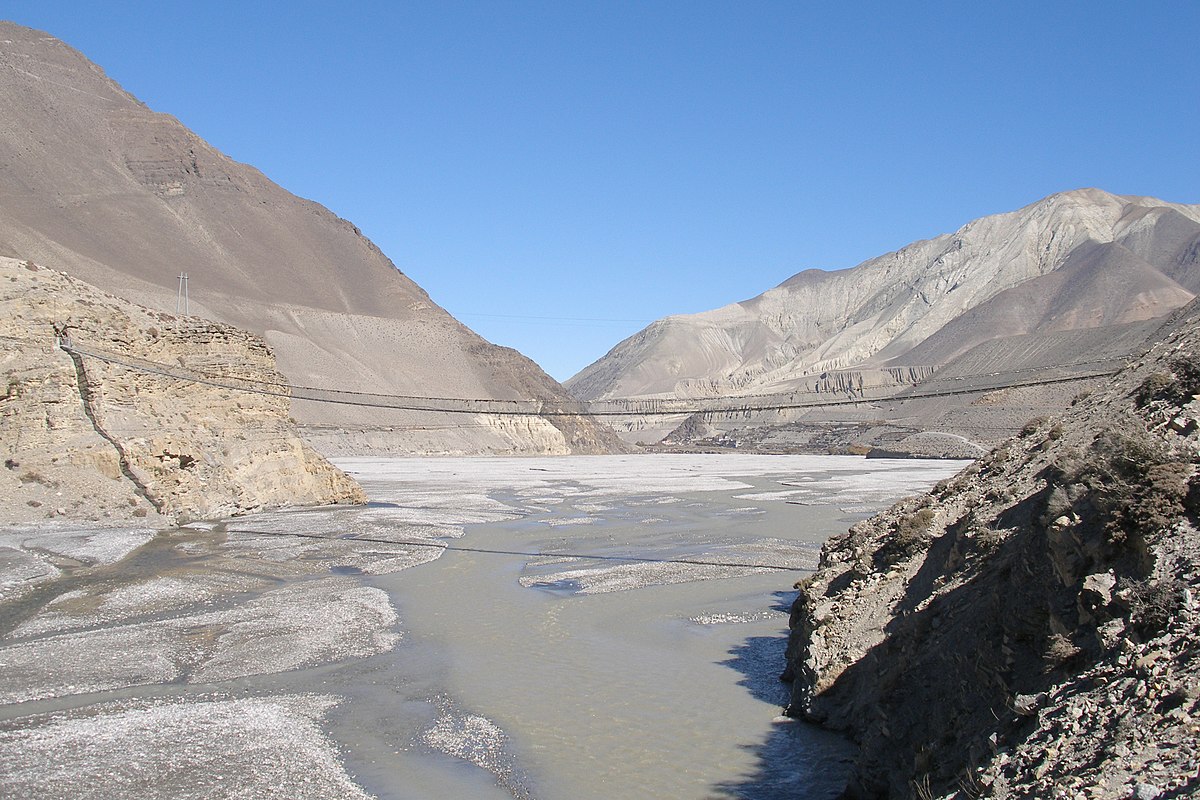Trip Facts:
Upper Mustang Trek
$2199
Altitude
3840mAccomodation
Teahouse/ LodgesDestination
Mustang RegionMeal
Full BoardWeather
ColdArrival:
Kathmandu, NepalDeparture
Kathmandu, NepalDifficulty
StrenueusOverview:
Upper Mustang Trek
The Upper Mustang trek is a journey into the hidden kingdom of Lo, offering a unique blend of Tibetan culture, stunning desert-like landscapes, and ancient monasteries. This remote area, often called the “Last Forbidden Kingdom,” was restricted to foreigners until 1992 and has preserved its traditional Tibetan culture and lifestyle. The trek provides an unforgettable experience of high-altitude trekking through arid terrain, colorful rock formations, and picturesque villages.
Trip Highlights:
Upper Mustang Trek
- Scenic flight from Pokhara to Jomsom.
- Exploration of the ancient walled city of Lo Manthang.
- Visiting centuries-old monasteries, caves, and palaces.
- Trekking through the unique, arid landscapes of Upper Mustang.
- Experiencing the rich Tibetan culture and traditions.
- Crossing high passes with panoramic mountain views.
Trip Iterinary:
Upper Mustang Trek
Arrival at Tribhuvan International Airport and transfer to your hotel. There will be a trek briefing and preparation session. Time permitting, explore Kathmandu’s cultural sites like Swayambhunath (Monkey Temple) and Durbar Square.
Short flight to Pokhara, a scenic city by Phewa Lake. Spend the day exploring and preparing for the trek. Visit attractions like the Peace Pagoda, Devi’s Fall, and the International Mountain Museum.
Morning flight to Jomsom, followed by a trek to Kagbeni, the gateway to Upper Mustang. Trekking through the Kali Gandaki Valley, enjoy views of Nilgiri and Dhaulagiri peaks. Visit the Kagbeni Monastery and stroll through the narrow alleys of this ancient village.
Ascend through barren landscapes and along the Kali Gandaki River to the village of Chele. The trail offers views of the Kali Gandaki Gorge, the world’s deepest gorge. Pass through small settlements and cross suspension bridges.
Continue through rugged terrain, passing caves and chortens, reaching Syanbochen. The trail involves steep climbs and descents, with panoramic views of the Mustang region. Overnight stay in a teahouse.
Trek over the Yamda La Pass (3,850m) and through picturesque villages to Ghami. The trail features mani walls (prayer stones) and offers views of barley fields and traditional Tibetan houses.
Trek through scenic routes to Charang, visiting monasteries and stupas along the way. Explore the red Gompa and the ancient fort. The village of Charang is known for its white dzong and red Gompa.
Reach the ancient walled city of Lo Manthang, the highlight of the trek. The trail offers views of Nilgiri, Tilicho, and Annapurna I peaks. Enter Lo Manthang through a narrow gate and explore its narrow streets and ancient buildings.
Full day to explore the palaces, monasteries, and caves of Lo Manthang, including the King’s Palace and the surrounding gompas. Visit the Thubchen Gompa, Jampa Gompa, and Chodey Gompa. Interact with the local people and learn about their culture and traditions.
Begin the return journey, trekking to the village of Drakmar, known for its red cliffs. The trail passes through high-altitude deserts and offers stunning views of the Mustang region. Overnight stay in a teahouse.
Continue descending through beautiful landscapes to Ghiling. The trail involves crossing the Nyi La Pass (4,010m) and offers views of the surrounding mountains. Explore the village and visit the local monastery.
Trek back to Chhusang, enjoying the changing scenery. The trail passes through the village of Tetang and follows the banks of the Kali Gandaki River. Overnight stay in a teahouse.
Final trekking day back to Jomsom, where the trek began. The trail passes through Kagbeni and offers views of the Nilgiri and Dhaulagiri peaks. Celebrate the completion of the trek with your team.
Morning flight from Jomsom to Pokhara. Free day to relax and explore Pokhara. Optional activities include boating on Phewa Lake, visiting the Gupteshwor Cave, or enjoying a massage at a local spa.
Fly back to Kathmandu. Free time for shopping or sightseeing. Visit the Boudhanath Stupa, Pashupatinath Temple, or Thamel for souvenir shopping.
Transfer to Tribhuvan International Airport for your onward journey. Reflect on your trekking adventure and the memories made in the Mustang region.
Included:
Upper Mustang Trek
- Airport transfers
- Accommodation in Kathmandu and Pokhara with breakfast
- Teahouse accommodation during the trek
- All meals during the trek
- Experienced trekking guide and porter services
- Necessary permits (ACAP, Upper Mustang Restricted Area Permit, and TIMS card)
- Domestic flights (Kathmandu-Pokhara-Jomsom-Pokhara-Kathmandu)
- Transportation (private vehicle, jeep, or bus)
- Comprehensive medical kit
- All government and local taxes
Excluded:
Upper Mustang Trek
- International airfare
- Nepal entry visa fees
- Travel insurance (mandatory, including emergency evacuation coverage)
- Personal expenses (hot showers, Wi-Fi, charging devices, etc.)
- Tips for guides and porters
- Extra nights in Kathmandu due to early arrival, late departure, or early return from the trek
- Any services not specifically mentioned in the included section
Frequently Asked Questions:
ABC Trek
The best times are during spring (March-May) and autumn (September-November) for favorable weather and clear views.
Prior trekking experience is beneficial but not mandatory. Good physical fitness and stamina are essential.
Yes, altitude sickness can be a concern. The itinerary includes gradual ascents and acclimatization days to mitigate the risks.




